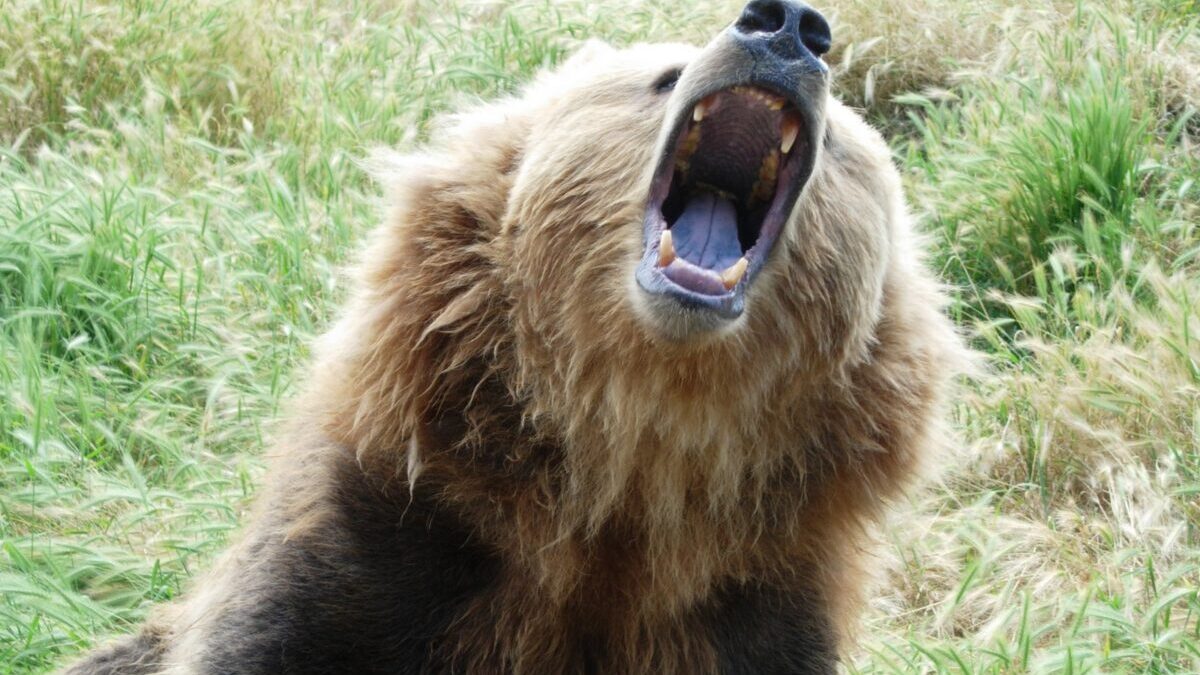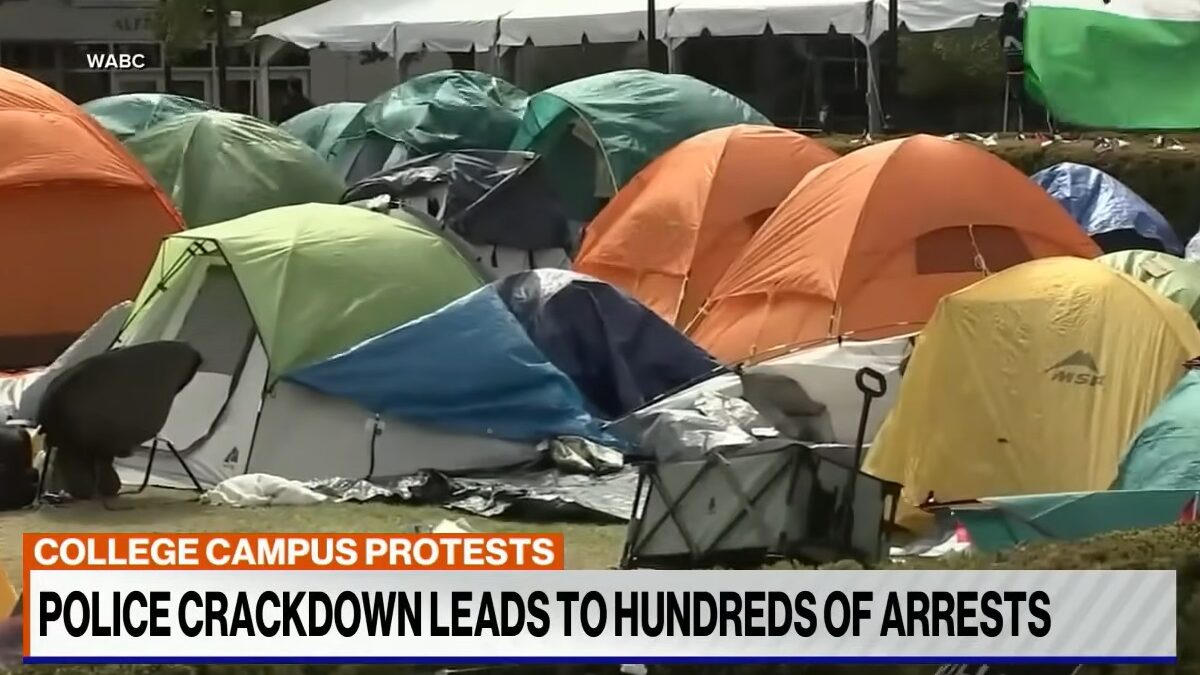Multiplying grizzlies across the west is akin to unleashing wolves on Washington, D.C. — both predatory land mammals that have retreated from their native ranges but would pose a deadly threat upon their return. By maintaining endangered species protections on the growing bear population, Washington lawmakers are enabling the grizzlies to terrorize communities in the West.
Grizzly bears are fascinating creatures. A bear’s nose can detect anything from an animal carcass to a Snickers bar stuffed inside a backpack up to 20 miles away. With an intake of up to 90 pounds of food per day, they can grow up to 700 pounds, run up to 35 miles an hour, climb into the tree canopy, and swim through alpine streams with remarkable efficiency. As kings of the food chain, they help sustain beautiful ecosystems that attract tourists, which contribute billions to the national economy. So it makes sense that we would want to keep their population thriving for generations.
But grizzly bears are also among the most violent beasts in the American wilderness. Their jaws can clench with enough power to crush a bowling ball. Their claws can grow up to four inches long and are sharp enough to tear into the flesh of those who dare enter grizzly territory. In July, one woman from Kansas fell victim to a bear attack near Yellowstone National Park. Eight others were reportedly killed in bear attacks in North America between 2020 and 2022. As the grizzly population rebounds, more conflicts are inevitable.
A ‘Remarkable Recovery’
Grizzly bears have been listed as a federally endangered species since 1975. The slow-reproducing bears, however, have made a “remarkable recovery” over the prior five decades, according to the National Park Service. Grizzlies in the Greater Yellowstone Ecosystem alone ballooned from 136 the year they were listed to 1,063 counted last year. The current population is more than double the threshold of 500 required to shed their endangered status, according to the criteria outlined by the Fish and Wildlife Service.
Grizzlies are now venturing well beyond the six designated ecosystems where their populations were destined to thrive, including Greater Yellowstone, Northern Continental Divide, Cabinet-Yaak, Bitterroot, Selkirk, and the North Cascades. Last month, High Country News ran a feature on the grizzly rebound: “In the Northern Rockies, grizzly bears are on the move.”
“Today, grizzlies number just below 2,000 in the lower 48,” the magazine reported. “Yellowstone’s grizzlies have tripled their range in recent decades and are now moving north out of the national park. Meanwhile, grizzlies in the Northern Continental Divide recovery zone are heading south. The populations are now only about 50 miles apart.”
In the 1990s, scientists even transplanted Canadian grizzlies into Montana, according to High Country News. The bears are now being spotted in places where sightings have not been reported in more than a century. Just this summer, a grizzly was reported roaming Montana’s Pryor Mountains for the first time in 200 years.
A Grisly Threat
However remarkable, the grizzly comeback presents a threat to livestock and humans. In 2021, Montana paid out $340,000 to compensate ranchers for livestock kills, mostly from grizzlies, up from $261,000 in 2019, according to High Country News. In Wyoming, state officials reported that captures and relocations of problematic bears almost doubled from 2020 to 2021. The bears’ recovery has created a nuisance for rural landowners now dealing with grizzlies encroaching on their land and ravaging livestock.
Mary Thoman and her family have been ranching in southwestern Wyoming for decades. Six years ago, Thoman and her team sold off grazing allotments in the Bridger-Teton National Forest over myriad issues related to the grizzlies. When asked what kinds of problems she faced with grizzlies, Thoman was almost overwhelmed, “I can’t even begin to tell you.” Put simply, “it was a nightmare.”
“When we were in the forest it was every night,” she said, that she saw grizzly activity threaten livestock. One of Thoman’s herders was even attacked at night. He survived, she said, while qualifying the experience as “traumatic.”
Worse than the bears, Thoman added, was the “bureaucracy.” The Forest Service began implementing constant rule changes delivered in the name of grizzly protection. Once Thoman complied with one order, she’d be hit with another, and then another and another, whether it had to do with fencing, food storage, and camp cleanliness. “Everything that we did voluntarily, they started making it a mandate.”
Thoman was even compelled to order GPS devices to prove she was compliant with the requirements to move fencing every night. The grizzly population in the national forest, she said, was “totally saturated.” Even though Thoman is no longer “surrounded by 10 grizzlies every night,” the bears have started moving south near where she lives in Sweetwater County.
Protections Remain
Last year, public comments recommended that officials with the National Park Service reintroduce wolves to Maryland and Virginia, states surrounding the District of Columbia, to control the local deer population. But, of course, officials from the park service, which is headquartered in D.C., dismissed the suggestion, citing risks to pets and children.
While the Department of the Interior was quick to keep wolves out of Washington, the Biden administration has been slow to act on grizzlies terrorizing ranchers and livestock. The Fish and Wildlife Service began to review the endangered status of grizzlies in Wyoming and Montana two years into the administration.
In the meantime, radical environmentalists are engaged in a campaign to protect dangerous bears and let them multiply and spread across rural America. In May, a coalition of 31 conservation groups also sent letters to the Biden administration and congressional lawmakers urging federal officials to keep grizzlies listed as endangered.
“Long-term funding for electric fencing, carcass removal programs, range riders, and other measures can reduce depredation and protect livestock producers,” they wrote to the Interior secretary.
But in her interview with The Federalist, Thoman said efforts to comply with existing regulations by the Forest Service were “almost impossible.”
Despite reaching their bear recovery goals, congressional Democrats and allied environmental groups are fighting efforts to lift protections. Recent efforts to delist grizzlies have been blocked by serial litigation while Democrats continue to block delisting efforts on Capitol Hill. When the Trump administration tried to delist the bears in 2017, a federal judge blocked the move.
State and congressional Republicans argue responsible management of the booming bear population is necessary to keep rural residents protected. In April, House Republicans moved forward legislation brought by lawmakers from Wyoming and Montana to delist grizzlies in the Northern Continental Divide and Greater Yellowstone ecosystems. Delisting would allow state officials to take the reins of grizzly conservation and potentially open the door to hunting, which would not only keep the population in check but could offer another boost to local economies in rural areas.
Cat Urbigkit, an award-winning author and photographer who operates a sheep ranch in western Wyoming and wrote Return of the Grizzly: Sharing the Range with Yellowstone’s Top Predator, says, “Yellowstone grizzly bears met their recovery goals years ago,” and it’s “naive to think that grizzlies should just be fully protected rather than managed.”









